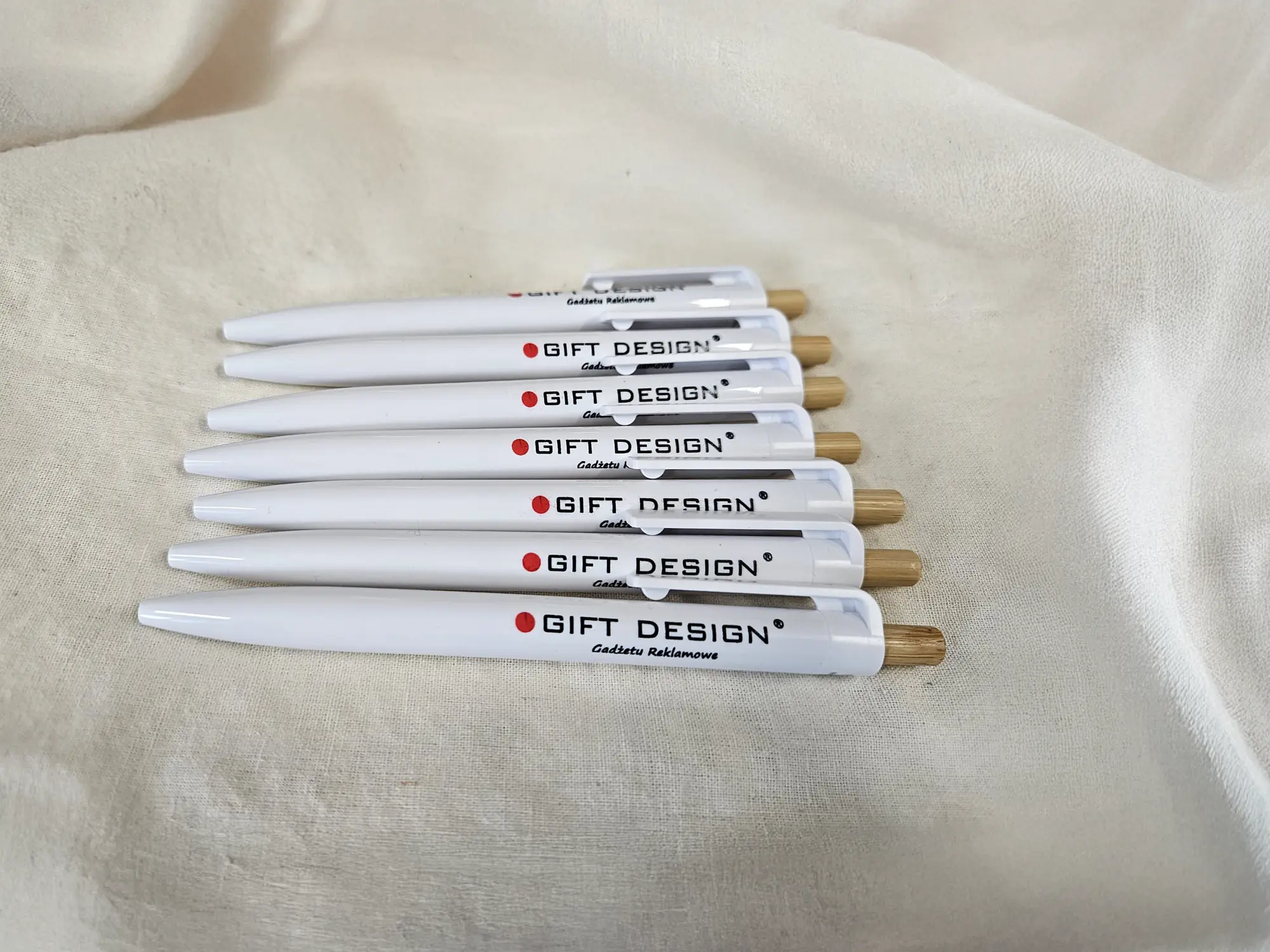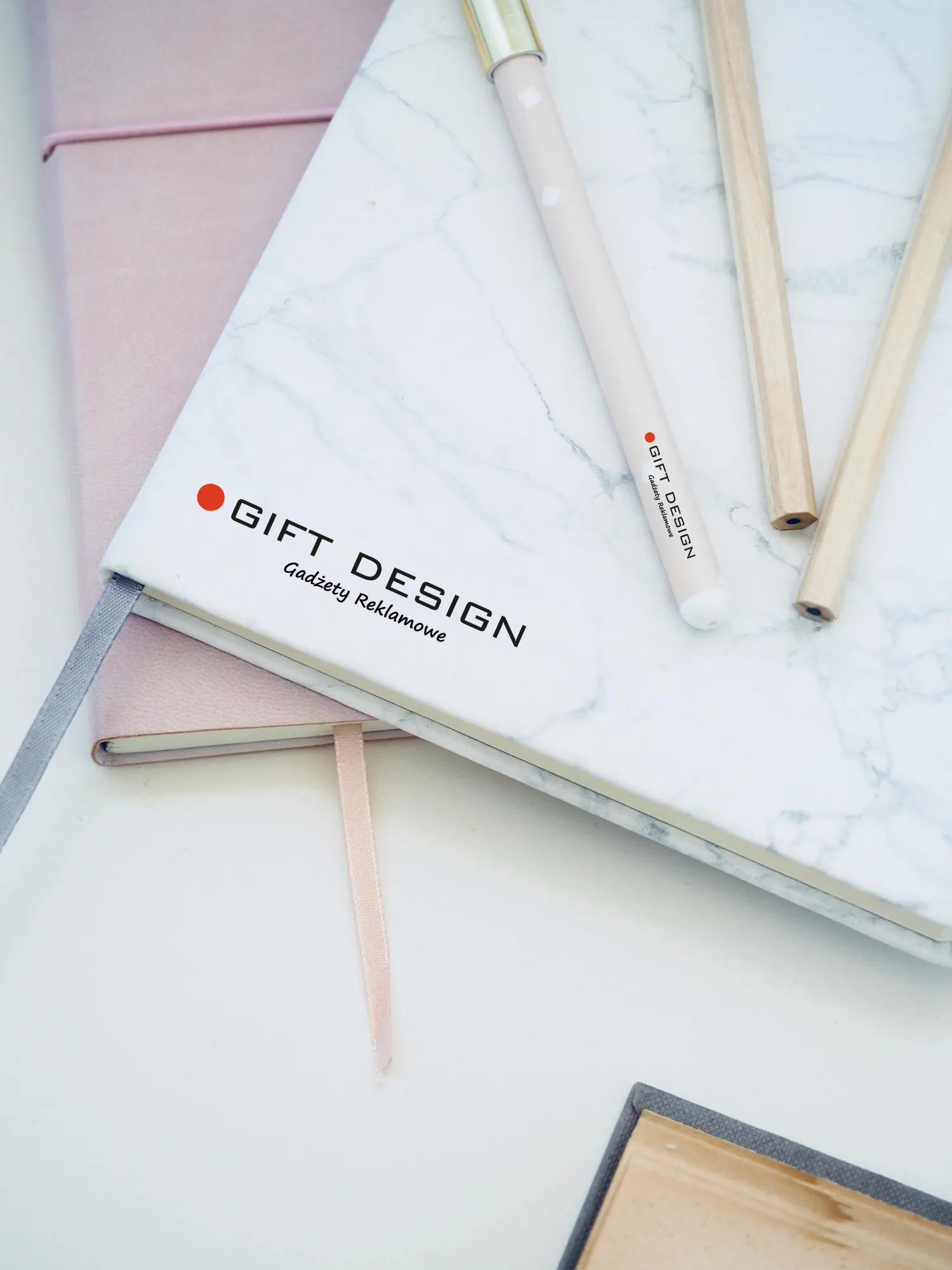



Tampodruk
Tampodruk to metoda nanoszenia grafiki, która sprawdza się szczególnie dobrze w przypadku przedmiotów o nieregularnych kształtach lub trudno dostępnych powierzchniach. Technika ta znajduje zastosowanie między innymi przy znakowaniu drobnych artykułów promocyjnych, takich jak kubki, breloki czy długopisy. W procesie wykorzystywana jest specjalna matryca wykonana z elastycznego tworzywa, na którą najpierw nakładana jest farba, a następnie wzór przenoszony jest na konkretny przedmiot. Taki sposób znakowania pozwala uzyskać precyzyjne i trwałe odwzorowanie detali, niezależnie od materiału, na którym wykonywany jest nadruk.
Co to jest tampodruk?
Tampodruk to technika polegająca na nanoszeniu wzoru na różne przedmioty przy wykorzystaniu elastycznego stempla, który pobiera farbę z matrycy i przenosi ją na wybraną powierzchnię. Umożliwia to uzyskanie precyzyjnego odwzorowania nawet najmniejszych elementów grafiki. Tampodruk znajduje swoje zastosowanie przy znakowaniu gadżetów oraz artykułów codziennego użytku. Metoda ta sprawdza się zarówno na powierzchniach płaskich, jak i nieregularnych, dzięki czemu może być wykorzystywana na produktach wykonanych ze szkła, metalu, ceramiki, tworzyw sztucznych czy tkanin. Trwałość uzyskanego nadruku oraz jego odporność na ścieranie i wpływ czynników zewnętrznych sprawiają, że technika ta znajduje szerokie zastosowanie w różnych gałęziach przemysłu, zwłaszcza przy produkcji elementów promocyjnych.
Zastosowanie druku tamponowego
Druk tamponowy umożliwia przenoszenie wzorów na przedmioty o złożonej geometrii, takich jak elementy wklęsłe, wypukłe czy nieregularne. Technika opiera się na użyciu silikonowego tamponu, który pobiera farbę z wygrawerowanej formy i precyzyjnie nanosi ją na wybraną powierzchnię. Dzięki elastyczności tamponu możliwe jest dotarcie do miejsc trudno dostępnych dla innych metod znakowania.
Metoda wykorzystywana jest w wielu sektorach przemysłu – od elektroniki, przez branżę reklamową, aż po produkcję sprzętu medycznego. Aby cały proces przebiegał poprawnie, niezbędne jest odpowiednie dobranie wszystkich elementów, czyli rodzaju farby, materiału matrycy, a także twardości i kształtu tamponu. Dobrze dobrana farba gwarantuje przyczepność do konkretnego materiału, a odpowiednio przygotowana matryca wpływa na precyzję odwzorowania wzoru. Elastyczność i sprężystość tamponu pozwala natomiast na równomierne nałożenie farby.
Parametry pracy urządzenia, jak siła docisku czy czas kontaktu tamponu z formą i powierzchnią nadruku, również odgrywają dużą rolę w uzyskaniu estetycznego i trwałego efektu. Dzięki odpowiedniemu dostosowaniu wszystkich etapów można uzyskać wyraźny i odporny nadruk nawet na bardzo nietypowych podłożach.
Maszyna do tampodruku – niezbędny element do znakowania gadżetów reklamowych
Tamponiarka to urządzenie przeznaczone do nanoszenia nadruków metodą tampondruku. Sprzęt ten pozwala na przenoszenie obrazu na różne powierzchnie, niezależnie od ich kształtu czy rodzaju materiału. W procesie wykorzystuje się elastyczny tampon, który pobiera farbę z matrycy i przenosi ją na wybrany przedmiot.
W zależności od zapotrzebowania, dostępne są różne modele maszyn – od kompaktowych wersji ręcznych po w pełni zautomatyzowane systemy przemysłowe. Urządzenia mogą być dostosowane do pracy z takimi materiałami jak szkło, plastik, metal czy ceramika. W wielu przypadkach stosuje się rozwiązania zwiększające dokładność i powtarzalność nadruku, w tym kontrolę parametrów pracy oraz systemy monitorujące jakość.
Dzięki możliwości konfiguracji maszyn pod kątem rozmiaru i kształtu produktów, technologia znajduje zastosowanie w produkcji seryjnej, ale także w mniejszych nakładach. Automatyzacja procesu pozwala zwiększyć tempo pracy i ograniczyć ryzyko błędów. Wpływa to na efektywność i estetykę końcowego efektu znakowania.
Odpowiednia matryca a jakość tampodruku na powierzchni do znakowania
W procesie tampodruku matryce pełnią funkcję nośnika wzoru, z którego farba przenoszona jest na wybraną powierzchnię. Ich konstrukcja i jakość mają bezpośredni wpływ na dokładność oraz estetykę końcowego drukarskiego. Do produkcji matryc stosuje się różne materiały, a wybór zależy od potrzeb technologicznych oraz rodzaju podłoża, na którym ma pojawić się grafika.
Najczęściej wykorzystywane są matryce elastomerowe, które dzięki swojej elastyczności sprawdzają się przy nieregularnych kształtach. W przypadku większych nakładów lub konieczności uzyskania wyjątkowo trwałego wzoru, używa się wersji stalowych. Rzadziej stosowana jest ceramika i szkło. Zwykle wykorzystuje się je wtedy, gdy wymagana jest odporność na wysoką temperaturę lub precyzyjne odwzorowanie bardzo drobnych elementów.
Przygotowanie matrycy rozpoczyna się od stworzenia odpowiedniego projektu graficznego, który następnie zostaje przeniesiony na jej powierzchnię. Proces może obejmować naświetlanie, trawienie chemiczne lub laserowe grawerowanie – wszystko zależy od technologii zastosowanej w danym zakładzie. Na dalszym etapie dba się o kalibrację i kontrolę parametrów, takich jak głębokość wzoru i siła nacisku.
Precyzyjne wykonanie i odpowiednie dostosowanie matrycy do charakterystyki produktu stanowi jeden z czynników wpływających na powtarzalność i trwałość nadruku w tampodruku. Z tego względu przywiązuje się dużą wagę do jakości materiałów oraz dokładności przygotowania każdego elementu.
Odpowiedni dobór farby do znakowanego gadżetu
W procesie tampodruku stosuje się farby opracowane z myślą o trwałym przyleganiu do zróżnicowanych powierzchni. Ich skład chemiczny został zaprojektowany tak, aby dobrze sprawdzały się na takich materiałach, jak metal, szkło, ceramika, tworzywa sztuczne czy drewno. Dzięki temu możliwe jest wykonanie precyzyjnych nadruków niezależnie od struktury czy kształtu podłoża.
Farby cechują się odpornością na działanie wielu czynników zewnętrznych, w tym promieniowania słonecznego, wody, olejów czy rozpuszczalników. Takie właściwości pozwalają na wykorzystanie nadrukowanych przedmiotów w różnych warunkach bez ryzyka szybkiego ścierania się wzoru. Dostępność wielu kolorów i wariantów barwnych pozwala uzyskać estetyczne efekty wizualne, nawet w przypadku drobnych detali.
W zależności od wymagań produkcyjnych można dobrać odpowiednią lepkość i gęstość farby, co ma wpływ na sposób jej nanoszenia oraz szybkość schnięcia. Takie dopasowanie umożliwia precyzyjne wykonanie nadruków zarówno w produkcji jednostkowej, jak i seryjnej. Odpowiednie przygotowanie powierzchni oraz dobranie właściwej farby pozwala uzyskać trwały efekt o wysokiej jakości, niezależnie od stopnia skomplikowania wzoru.
Zalety nadruku tampodrukiem
Technika tampodruku wyróżnia się dużą efektywnością oraz niskim kosztem wykonania, co czyni ją atrakcyjnym rozwiązaniem w produkcji seryjnej. Proces pozwala na bardzo dokładne przenoszenie wzoru, także na powierzchnie o nieregularnym kształcie. Dzięki temu znajduje ona swoje zastosowanie w przypadku przedmiotów trudnych do zadruku innymi metodami. Uzyskane nadruki cechują się dobrą trwałością i odpornością na ścieranie, a to przekłada się na długotrwały efekt wizualny.
Z drugiej strony, technika ta wiąże się z pewnymi ograniczeniami. Obszar zadruku nie może być zbyt rozległy, a liczba kolorów stosowanych w jednym projekcie zazwyczaj nie przekracza czterech. W przypadku materiałów o ciemnym kolorze lub chropowatej strukturze może zaistnieć potrzeba nałożenia farby dwukrotnie w celu uzyskania odpowiedniego nasycenia barwy. Dodatkowo, przy zadruku na powierzchniach metalowych niezbędne jest użycie specjalnych środków utrwalających, które zwiększają odporność nadruku na ścieranie i chronią przed jego przypadkowym usunięciem. Nie wiesz, czy wykorzystać do znakowania swoich gadżetów tampodruk, czy inną metodę zadruku? Zapraszamy do kontaktu! Nasi specjaliści pomogą Ci dobrać najlepsze rozwiązanie dla Twojego zlecenia!
